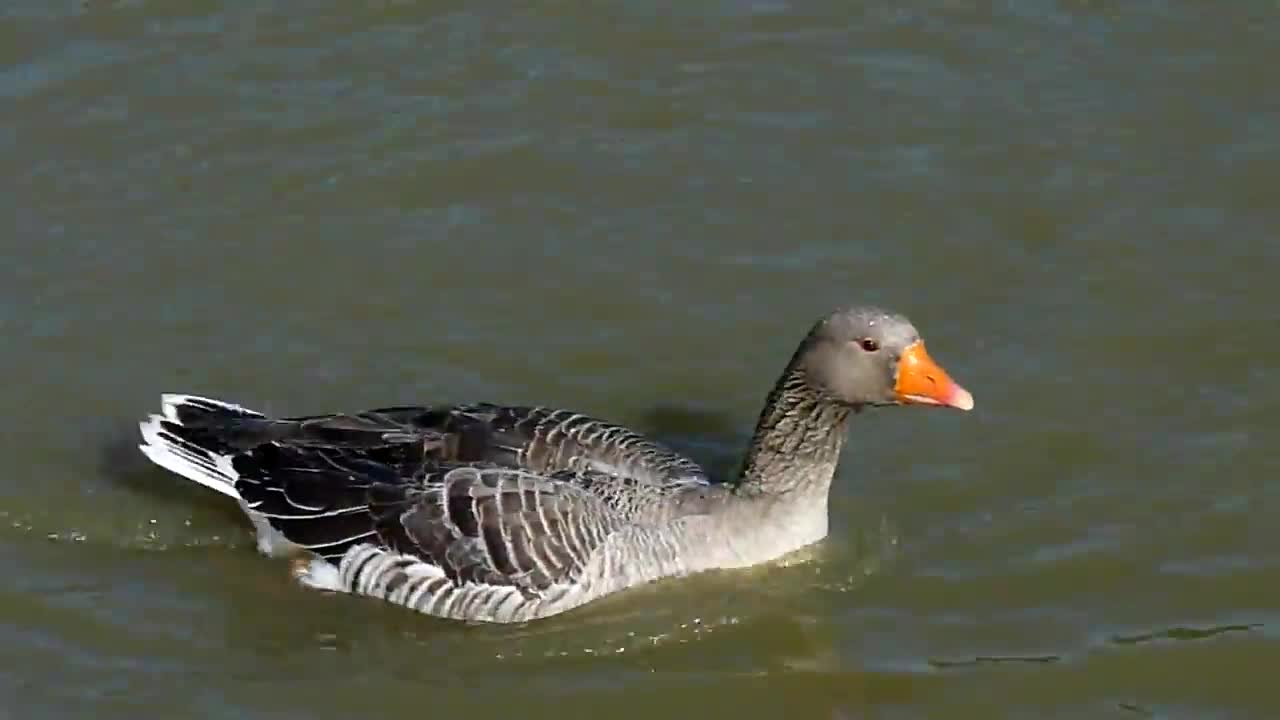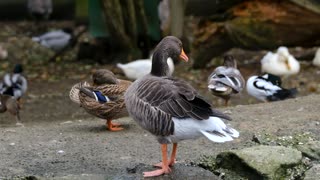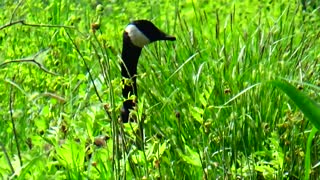Premium Only Content

Toulouse Goose
Originally from Toulouse (France), famous for the production of liver paste (“Paté de foiegras”). They are bred with interest not only in the south of France, but in many countries in Europe and America. It is the best known and recommended breed for this country.
Thick plumage, full and soft, gray, as described in each region and corresponding to wild type.
Large head, short and wide, with a high gray dome. The beak is short, strong, high at the base, flat at the tip, yellow or pale orange, with no black spots in the adult. Large eyes, not very prominent, dark brown or hazel.
Medium neck, slightly arched, very vigorous, dark blue-grey, lightening as it approaches the back. In adults it is preferable to have a jowl in the throat.
Large vigorous wings, softly glued to the side, dark gray primaries, even darker secondaries but with a narrower light gray border. Dark gray covered with a very thin hard edge of lighter gray.
Protruding chest, full, broad, low and round, with a long, well-placed keel, light gray.The main purpose of the rearing of Toulouse geese, although also used for storage and ornamentation, is slaughter for the production of meat and use of fatty liver for the paste. Feathers, which are very abundant, are a by-product of not negligible value. Submitted to a good diet, they can reach 4kg in 10 weeks and 5 to 6kg in 5 to 6 months, being, therefore, very precocious. Adults can be fed and in this case they have reached 15kg. This feed is easily done. So the weight of the liver reaches 2 kg and the lard 3. The meat is not very thin, nevertheless it is one of the best of the species. It is difficult to distinguish between the sexes, although the male is larger and more elegant. Geese lay an egg every other day, in spring, young ones 15 to 25 and older ones up to 60 eggs. They do not require water for swimming, although it is believed to be useful for reproduction. They hatch late and incubation is unsafe, lasting 28-30 days. Breeding the goslings is relatively easy. Both in North America and in Brazil, it is the most common breed, not only because it is the most adapted to the farm regime, but also because it is more suitable for barley. Heavily pastes, living largely on the consumption of herbs, but their prolonged stay in high, moist pastures is harmful to them.
-
 2:06
2:06
Maxing And Relaxing
3 years agoWatch A Goose Goose another Goose
27 -
 0:14
0:14
Maxencefs
4 years ago $0.01 earnedStadium of Toulouse
15 -
 0:48
0:48
Hugh58
4 years agoMomma Goose
7 -
 0:16
0:16
trmohammad17
4 years agoGoose Greylag Goose Feather
75 -
 0:11
0:11
Maxencefs
4 years agoYoanna freestyle show Toulouse Stadium
12 -
 0:24
0:24
NewHampshire603
3 years agoGoose in the Grass
19 -
 0:20
0:20
NewHampshire603
3 years agoCanada Goose and Goslings
58 -
 8:44
8:44
threestrikesurout
4 years agoNonograms - Goose
19 -
 53:08
53:08
The Kevin Trudeau Show Limitless
3 hours agoOne-Man Shark Tank Reveals His Secret To Massive Money Success
741 -
 49:01
49:01
The Rubin Report
2 hours agoJoe Biden Quickly Regrets Letting ‘The View’ Interview Him
21K24